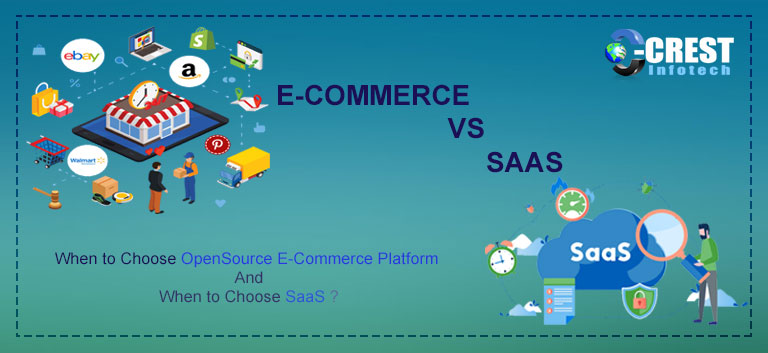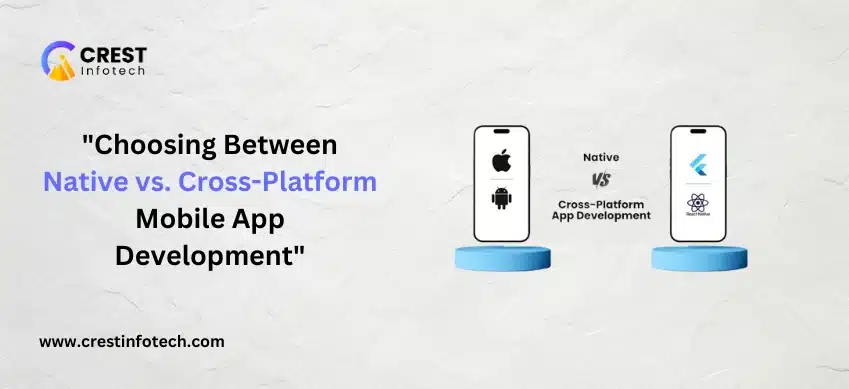It’s not easy to select an eCommerce site for your online business. With an overwhelming number of platforms to choose from, design, accessibility, price, versatility and more must be compared by merchants. Some merchants may have creation and coding skills that they can exploit, while others want a minimally designed out-of-the-box platform.
This article focuses on two distinct software architectures, open source versus software as a service, though there are several ways to compare platforms (SaaS). These two common types of platforms place eCommerce software in two separate camps and decide how you communicate with your platform and fund it.
SaaS vs Open Source eCommerce Platforms Comparison
You will often come across open source or SaaS terminology when assessing platforms, and it is important to consider their differences. Functionality, payment terms, and more are decided by how your eCommerce software is designed.
What is a Forum for SaaS eCommerce?
Software as a Service is a licencing and distribution model for software under which software on a subscription basis is approved. SaaS software may also be referred to as web-based or hosted software because it is not downloaded or installed on individual devices, but is hosted by a third party in the cloud instead.
In other terms, the provider hosts and operates SaaS eCommerce sites and then licences them to be used by merchants. Users use web browsers to access these applications and pay a monthly subscription fee depending on the service level and number of users.
The primary benefit of SaaS eCommerce platforms is that the programme itself is not built on-site or managed by the customer. Instead, the programme is developed, hosted and managed on its own servers by your eCommerce provider. This implies, however, that users are limited in their ability to edit the source code of the programme or modify it.
Common examples of platforms for SaaS eCommerce include:
- Shopify and Shopify Plus
- BigCommerce
- Volusion
- Squarespace
Open source eCommerce sites are on the other side of the aisle. Open source software enables users to access, edit and share their source code for their own use. Open source software is therefore created freely and collaboratively in this way. In communities like GitHub, you can search and download open source applications.
Open source eCommerce sites are on the other side of the aisle. Open source software enables users to access, edit and share their source code for their own use. Open source software is therefore created freely and collaboratively in this way. In communities like GitHub, you can search and download open source applications.
Common examples of eCommerce software that is open source include:
- Magento
- WooCommerce – eCommerce plugin for WordPress
- X-Cart
- Prestashop
- OpenCart
Comparing SaaS vs Open Source Platforms
Two radically different software styles are SaaS and open source platforms. The architecture of each platform drives your software experience and impacts how you run your company.
- Go-to-Market Time
- Ongoing maintenance
- Security / PCI Compliance
- Customization / Features
- Integration / Flexibility
- Total Cost of Ownership
It is relatively easy to install both open source and SaaS platforms. The architecture of an open source platform is free to install, and SaaS platforms such as Shopify usually have a free trial to get started.
Don’t be misled by the free price tag of open source for downloading, however. To get up and running, these platforms would have considerably more work and coding skills required. Hosting, security, and designing your theme will have to be achieved. Think about open source when you launch a site for eCommerce from scratch. As you get more control over the look and feel, over time, you will be forced to make more choices.
On the other side, SaaS systems are designed for out-of-the-box functionality. They usually have user-friendly UIs and pre-built themes to create the look of your shop (with little to minimal coding knowledge). Since they take care of security and hosting, you don’t have to think about setting it up. Realistically, in just a few days, you can have a minimalist store ready. Overall, if you want to get started quickly, a SaaS eCommerce platform would be your best bet.
Maintenance and Service continuous
SaaS eCommerce platforms need little effort for ongoing maintenance on the part of the retailer. The SaaS provider hosts, tracks, and updates their software on an ongoing basis because you are licencing the software. You have no liability for results, problems with the server, and more.This also implies that when something goes wrong, you have a supplier to call. Fixing machine failures or other software glitches is their responsibility.
On the other side, open source platforms placed the merchant or their developer agency under maintenance and support. You are responsible for all the platform technology and administration. Hosting must be set up and you must keep on top of software changes and updates. If something in your environment goes wrong, then you have to find the problem and repair it.
This complete control over efficiency, site pace, and how you develop your infrastructure could be desired by some merchants.
Security / PCI Compliance
The protection of your webstore and PCI enforcement is a subject of utmost importance. You must safeguard the data of your users, particularly their payment details, with hackers constantly searching for vulnerable sites.
Providers of SaaS applications will take care of protection for you and PCI enforcement. However, open source platforms leave that to their customers. You’ll have to ensure that you comply with PCI enforcement requirements and keep up-to-date with any security firewall updates or bug fixes.
Customization / Features
Your basic needs for eCommerce will be fulfilled by both SaaS and open source platforms. You will be able to personalise the style, product pages, check-out experience, email marketing, etc. of your store.
Instead, thinking about your particular needs and the ultimate customer experience that you want to build is crucial. Those more basic needs could determine which platform you want. As stated, since they leverage considerable out-of-the-box functionality, SaaS eCommerce platforms are simple and fast to set up. Then, to broaden features for cart abandonment, email marketing, loyalty services, and more, they deliver comprehensive app markets.
The capacity to customise features, themes and performance is where SaaS platforms will fall short for merchants. Entry to the source code will be limited, which restricts the ability to edit and modify it. If you don’t have an app or feature installed that you need yet, you may be out of luck.
However, open source frameworks are designed to handle customization and promote the adaptation and evolution of the platform by their developer groups. This implies that the sky is the limit to accessibility here.
Your developers need to know what they’re doing either way. You don’t want to create a “Frankenstein” site that over time becomes bulky and difficult to use. Just because you can create it doesn’t mean you should always construct it.
Merchants must choose between SaaS and open source offerings when assessing eCommerce platforms. One platform category may be better suited for you than the other, depending on your needs and budget.
You can also Hire Dedicated Designers. Contact Crest Infotech to know more about Dedicated Designing services in Details.



